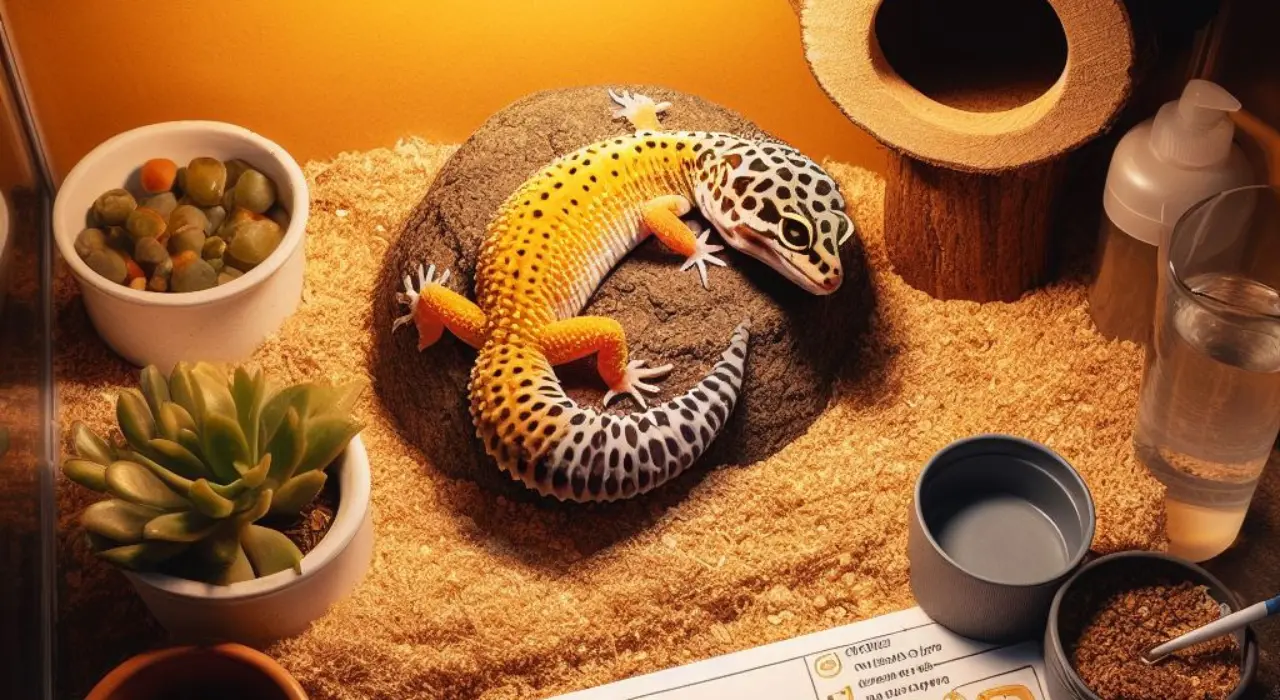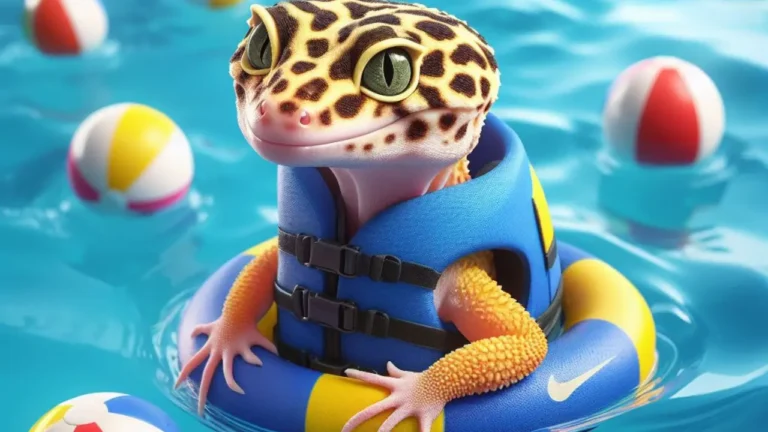Do Leopard Geckos Need Heat Mats?

Leopard geckos need heat and light sources in their tank to mimic the temperature and light differences between night and day that you would get in nature.
The best option for this at home is a heat lamp and a heat mat combo. Without both, leopard geckos can get too cold and suffer from the lack of day/night cycles that they have evolved with.
The Importance of Heat Lamps and Mats for Leopard Geckos
So why do leopard geckos need a heat lamp?
Well, geckos are ectothermic which means they can’t generate heat from their bodies like we can, and need to absorb heat from somewhere else.
In nature, that heat would come from the sun but in an indoor environment like your home there might not be enough sunlight available for your gecko to get all the warmth it needs.
And that’s where heat mats and lamps come in. While a heat mat can provide this heat on its own, an additional heat lamp helps create a “hot zone” in their environment and has the added benefit of simulating the night and day cycle they would experience in the wild.
Why do Leopard Geckos Need Heat?
Leopard geckos are native to the warm, arid regions of Asia like Pakistan and Afghanistan. In their natural habitat, temperatures can reach as high as 110°F during the day, and drop to as low as 60°F at night so their bodies have adapted to this climate (and temperatures) over millennia of evolution.
Because of this, heat is crucial for the gecko’s health and wellbeing and it helps them regulate their metabolism and digestion. The cycle of hot and cold (as well as day and night) keeps their body and metabolism functioning properly.
The hotter parts of this cycle help geckos move, be alert, and digest their food. The colder part of the cycle slows them down and provides a signal to rest and recover.
Heat is vital to a gecko’s wellbeing and without the right temperatures, your gecko can become lethargic, less active, and more prone to a host of health issues.
Do I Need A Heat Mat If I Live In A Warm Climate?
This can seem like an easy question to answer – with the right temperatures and humidity there’d be no need for a heat mat, right?
Well, technically that’s true but unless you live in the aforementioned arid regions of Pakistan and have an outdoor enclosure for your gecko then the difficult part will be keeping the temperatures right all the time.
Most humans don’t enjoy the same conditions as a gecko and the inside of their house is unlikely to be an ideal environment for one. And that’s without mentioning that in their natural habitat geckos can seek shelter under rocks and in crevices when the heat gets too much or bask in the sun when they want some extra warmth.
Heat mats are designed to provide a steady, low-level heat that simulates the warmth of a rock or burrow and makes it easy for you to give your gecko a perfect little home. The mat can be placed on the bottom or side of the enclosure, and you should definitely get one with a thermostat to control the temperature and prevent overheating.
Heat mats are about convenience as much as anything. Even if you live in a warm climate, with a heat mat you don’t need to worry about how sunny it is, how cold it gets at night or what the weather will be like next week.
Do I Need Both A Heat Mat And A Heat Lamp?
Technically, as just a source of heat, either a mat or a lamp would be fine on their own if they are generating the required amount of heat.
If you want to be a good gecko owner though (and I’m sure you do) then I would always advise you to get both.
Lamps are the best way to simulate the day/night cycle which is extremely important to your gecko’s overall health and well-being.
So should you get a lamp and not a mat? Again, technically you could if your lamp was heating the tank properly but it’s much easier to maintain the right temperatures with a mat so they both have benefits and complement each other.
Bottom line: Get both. It’s easier for you and better for your gecko.
The Consequences Of Not Using A Heat Mat For Leopard Geckos
If the temperature is too low for a prolonged period your gecko will become sick and eventually die. If the temperature drops below 60 degrees for more than a few hours it can be extremely dangerous for a leopard gecko.
Obviously, that is taking things to the extreme and something I hope will never happen but it is a very real possibility so it needs saying.
Even without going to extremes, low temperatures can cause a number of ill effects in geckos.
Signs That Your Leopard Gecko Isn’t Getting Enough Heat
You might notice your gecko looking lethargic and struggling to open their eyes. This is a good sign that they are low on energy which can be a direct result of not getting enough heat.
Your gecko might also spend more time hiding than usual. If your gecko is staying in its hide and generally becoming withdrawn and more solitary it could be trying to stay warm or conserve the heat and energy it does have.
They will also eat and drink less than usual. As I stated above, heat
How to Heat Your Leopard Gecko Tank Properly
Geckos need a couple of different zones with different temperatures, also known as a temperature gradient. This helps to simulate their natural environment where there would be warmer and cooler spots depending on shade, sunlight, what kind of surface there is, etc. If you imagine a gecko in the wild you might expect to find them basking on a rock, chasing insects into a crevice, or hiding in the shadows to escape a predator.
These temperature zones also help to mimic the day/night cycle more effectively as it naturally gets colder in the evenings and warms up towards the middle of the day.
The hot zone of the tank will be where your heat lamp and/or mat focus their energy and will need a basking spot for your gecko and should have a daytime temperature of between 85-95 degrees Fahrenheit. You might notice that your gecko doesn’t actually spend much time in this hot zone and that’s perfectly normal as leopard geckos aren’t known as being avid sunbathers but it’s still a vital component in any leopard gecko habitat.
At the other end of the scale (and quite possibly at the other end of the tank) should be the cool zone (who’d have thought it!).
Obviously, your heat lamp shouldn’t be pointing here and you might want to include something to create a bit of shade but that’s optional and probably worth experimenting with as different geckos and different ambient temperatures and environments will make shaded areas more or less welcome.
The temperature in the cool zone should be between 75 and 79 degrees Fahrenheit.
It’s important to keep an eye on your gecko’s behavior, health, and mood when you set up its tank or make any changes to the heating/lighting setup but following the guidelines above should have you well on the way to a happy, healthy (not to mention warm) leo on your hands.


